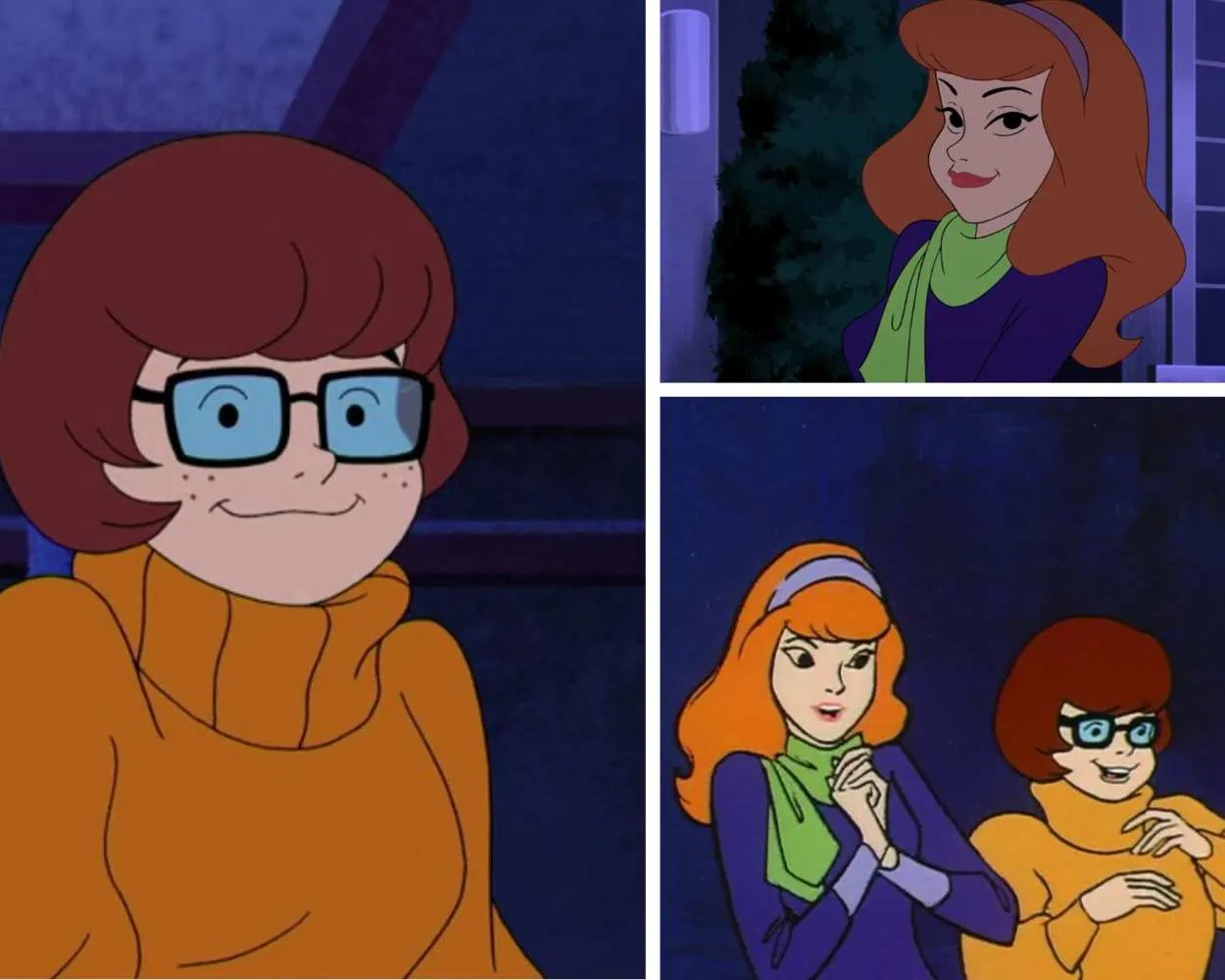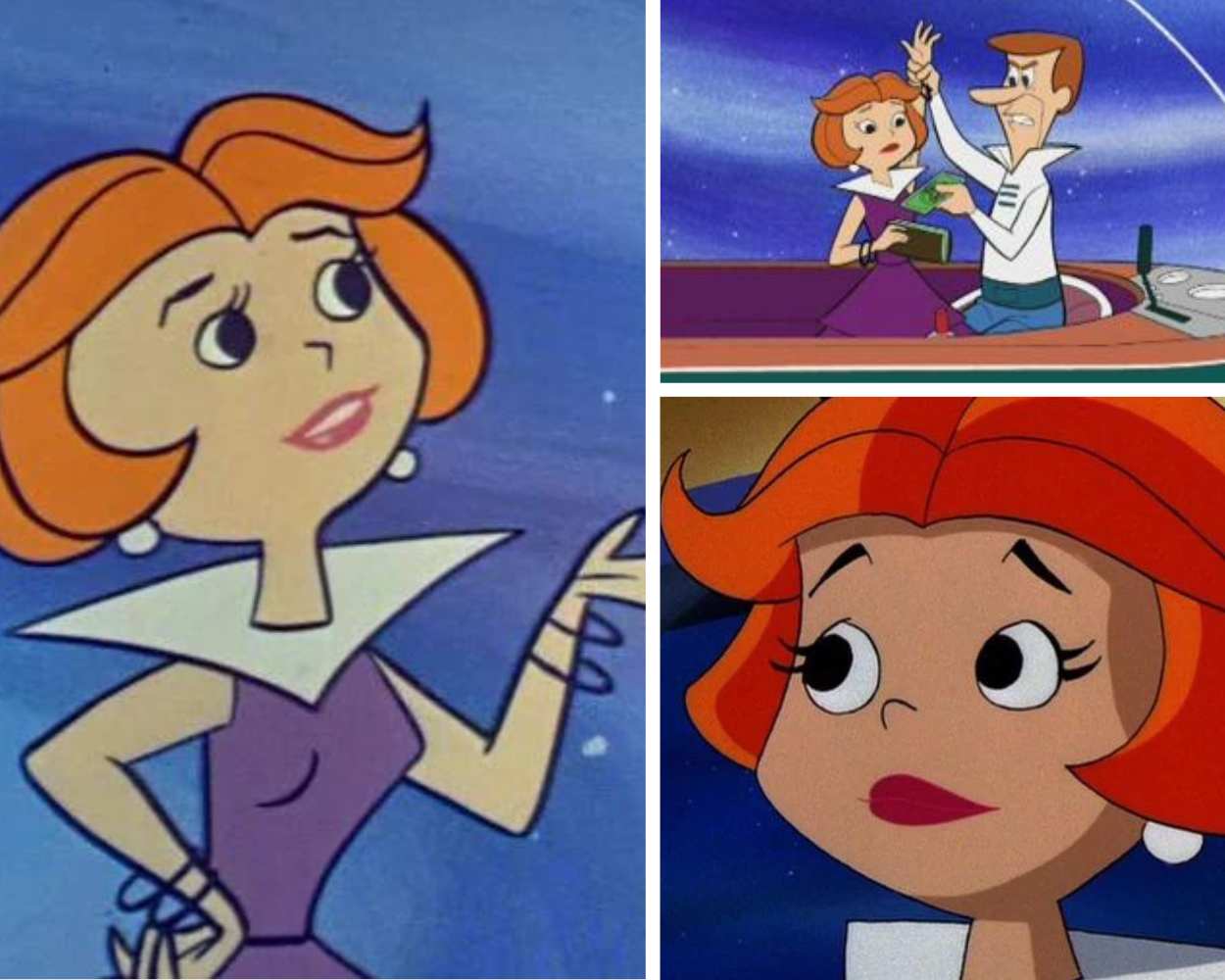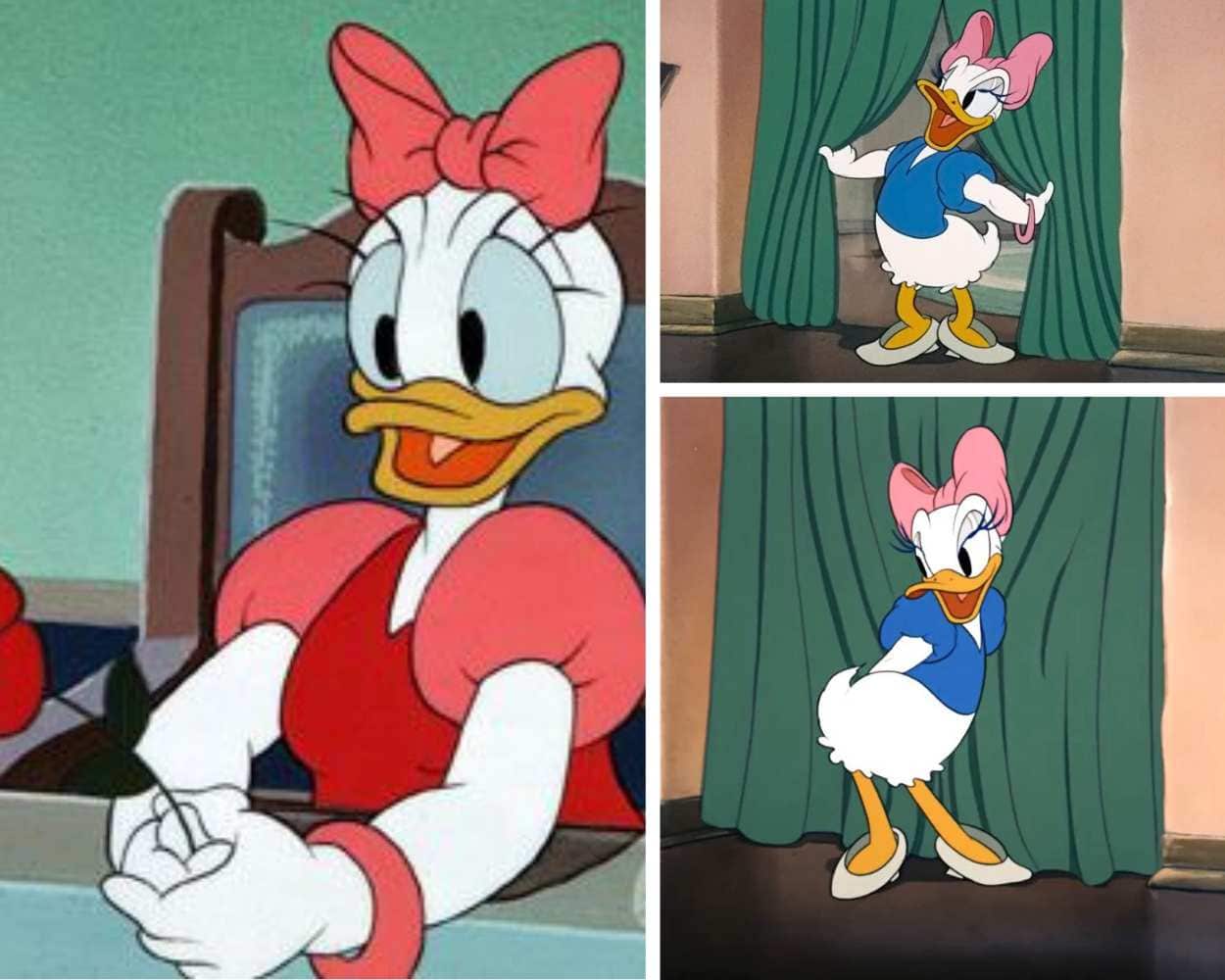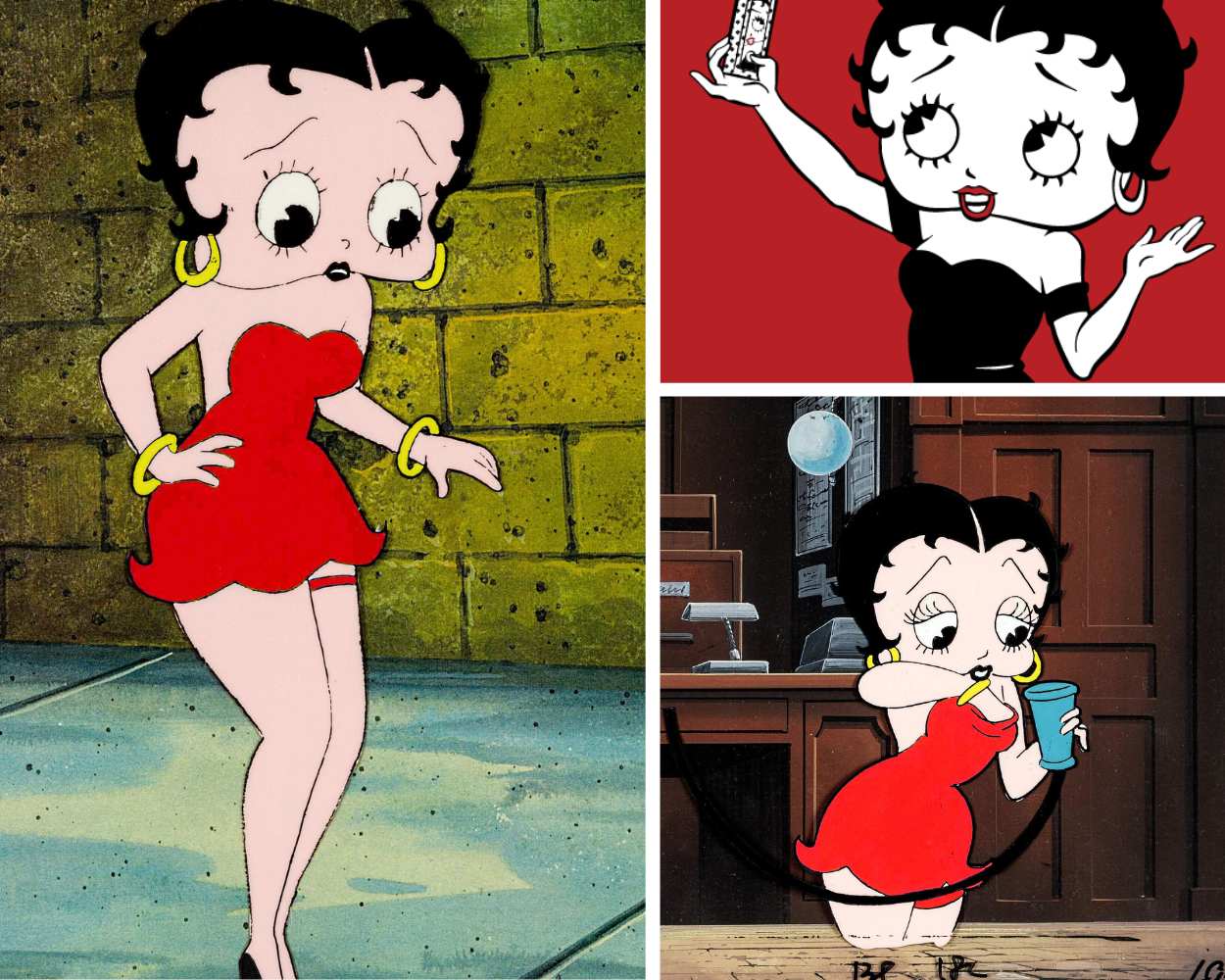The oldest female cartoon characters include Olive Oyl, Minnie Mouse, Betty Boop, Daisy Duck, Wilma Flintstone, and Jane Jetson.
These women represent not just eras of animation but changing perceptions of femininity, societal norms, and women’s roles in storytelling.
From the flirtatious waves of a 1920s flapper to the prehistoric antics of a stone-age housewife, female cartoon characters have captured our hearts and imaginations for over a century. Their stories and styles have evolved, but their impact remains undeniable.
Best Old Female Cartoon Characters
Today, we’ll kick things off by spotlighting a group of animated women who have not only withstood the test of time but have etched themselves into the very fabric of our pop culture.
These are the timeless ladies of animation.
Daphne Blake & Velma Dinkley
Debut: 1969 (with the premiere of the TV show)

With her elegant demeanor and striking red hair, Daphne often found herself in precarious situations. However, it’s essential to recognize that she was more than just a ‘damsel in distress.’ Her resourcefulness and tenacity proved invaluable on countless occasions.
On the other hand, Velma, unmistakable in her orange turtleneck and glasses, is best remembered for her iconic exclamation, “Jinkies!”
More often than not, Velma’s sharp intellect and observational skills unveiled the essential clues, paving the way to unraveling the most intricate mysteries. Together, these two women showcased the perfect blend of brains and bravery, leaving an indelible mark on animated detective lore.
Marge Simpson
Debut: 1987 (initially on “The Tracey Ullman Show” as a short)

Emerging prominently during the 80s and continuing to be a significant presence in the following decades, Marge Simpson stands out not only as an old female cartoon character but also as the vibrant blue-haired matriarch of the Simpson family.
Serving as the family’s emotional anchor, Marge’s tales encompass a wide range of experiences, from the everyday trials and tribulations of suburban life to the most extraordinary adventures.
The diversity of her stories is as vast and colorful as her towering blue hair, an iconic symbol in the world of animation. With her distinctive hair and motherly instincts, this multifaceted character has left an indelible mark on viewers, making her one of the most memorable figures in cartoon history.
Jane Jetson
Debut: 1962 (with the premiere of the TV show)

In the vast panorama of old female cartoon characters, Jane Jetson stands as a beacon of the future, offering a vivid and futuristic contrast to Wilma Flintstone and her stone-age setting.
Set against the backdrop of an ultra-modern space age, Jane Jetson encapsulates the quintessential family life of tomorrow. She adeptly navigates a world filled with moving sidewalks, robot maids that cater to every whim, and flying cars that zoom through the skies of a high-tech metropolis.
Beyond the gadgets and the gleaming cityscape, Jane’s character delves into the challenges and joys of maintaining family values and connections in a rapidly changing world, giving viewers a unique blend of nostalgia and forward-looking optimism.
Wilma Flintstone
Debut: 1960 (with the premiere of the TV show)

Transitioning from the earlier eras to the 1960s introduces us to one of the most iconic old female cartoon characters, Wilma Flintstone. With her signature red hair and pearl necklace, Wilma is the endearing prehistoric matriarch of the Flintstones family.
Set in the whimsical town of Bedrock, where dinosaurs and humans coexist, Wilma’s adventures alongside her husband Fred, their jovial neighbor Barney, and her best friend Betty provide a comedic yet poignant lens into prehistoric family life.
Granny
Debut: 1942 (in the short “Birdy and the Beast”)

During the vibrant era of the 1940s, amidst the backdrop of a world undergoing significant change, the world of animation introduced us to an unforgettable character named Granny.
With her white hair neatly tied up, this spirited and bespectacled older woman became iconic as the feisty and loving owner of the innocent yellow Tweety Bird. Her adventures are marked by her unwavering determination to shield her cherished pet from the relentless pursuits of Sylvester the Cat.
Daisy Duck
Debut: 1940 (first appeared in the cartoon “Mr. Duck Steps Out”)

Making her debut in the 1940s, when animation was undergoing profound evolution, Daisy Duck emerged as a breath of fresh air. With her undeniable spunk and fierce independence, she carved out a niche for herself, distinguishing her character from the typical cartoon damsels of her time.
Rather than being a mere side character or an accessory to a male counterpart, Daisy symbolized modern femininity and strength. Her dynamic relationship with Donald Duck offers audiences a delightful, often hilarious, perspective on romantic relationships.
Betty Boop
Debut: 1930 (initially in the cartoon “Dizzy Dishes”)

In the golden era of the 1930s, when animation was still in its budding stages, the world was introduced to the unparalleled sass and pizzazz of Betty Boop.
With her flirtatious demeanor, signature style, and captivating voice, she was celebrated as one of the first animated ‘sex symbols.’ Yet, amidst the allure and charm, Betty always exuded an innate innocence that endeared her to audiences of all ages.
Her unique blend of sensuality and sweetness, combined with her timely representation of a changing society, has solidified her status as not just a product of her time but as someone considered one of the greatest cartoon characters ever in the annals of animation history.
Minnie Mouse
Debut: 1928 (in the “Steamboat Willie” cartoon)
A mere decade after the initial surge of animated figures graced our screens, the world witnessed the emergence of Minnie Mouse, one of the most beloved old-time female cartoon characters.
As Mickey Mouse’s unwavering sweetheart, Minnie’s presence was not just a complement to Mickey but a testament to her charm and appeal. Dressed in her iconic polka-dotted dress, complemented perfectly with a matching bow, Minnie quickly became more than just a cartoon character; she became an emblem of Disney’s enchanting world of wonder.
Olive Oyl
Debut: 1919 (in the “Thimble Theatre” comic strip)
Embarking on a captivating journey back in time, we arrive in the year 1919, a period when the world of animation was still in its infancy. During this time, audiences first encountered Olive, a uniquely lanky and endearing damsel.
Characterized by her tall, slender frame and unmistakable persona, Olive often found herself amid a romantic tug-of-war, torn between her genuine admiration for the strong sailor, Popeye, and the persistent advances of the formidable Bluto.
Interestingly, Olive’s character holds the distinction of gracing the pages of the “Thimble Theatre” comic strip even before the introduction of Popeye, making her not just a pioneering figure but also a testament to the evolving role of female characters in early animation.
As one of the first and most enduring female icons in the animated world, Olive’s legacy has remained unfading, continuing to captivate generations with her charm and resilience.